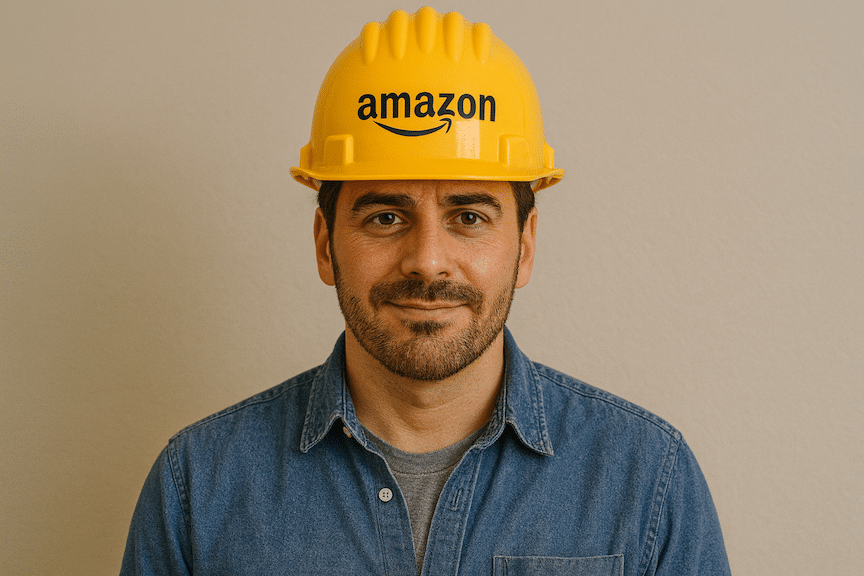The Amazon Suspension Crisis: A Seller’s Guide to Survival and Prevention in 2025
Every hour, an Amazon seller receives notice of suspension. Here’s how to make sure you don’t become the next e-commerce casualty

Every hour, there’s a very good chance that another Amazon seller receives the email that stops their business cold: “Your selling privileges have been removed.”
If you’re reading this, you might be one of them—or desperately trying to avoid becoming the next casualty. With suspensions potentially costing tens of thousands in lost revenue and according to Amazon experts, over 35% of sellers receiving a notice of violation in 2024, understanding Amazon’s enforcement system isn’t optional—it’s survival.
Quick Navigation: What You Need Right Now
- Just suspended? Jump to The First 48 Hours
- Writing an appeal? See Crafting the Winning Plan of Action
- Want to prevent suspension? Check Prevention: The Ultimate Strategy
- Have specific questions? Visit our FAQ
Understanding the New Era of Amazon Enforcement
Think of Amazon’s 2025 enforcement system like a credit score for your seller account—except the stakes are your entire business. At the heart lies the Account Health Rating (AHR), your account’s vital sign that Amazon monitors 24/7.
Important Note for International Sellers
While this guide primarily focuses on Amazon.com (US marketplace) policies, the core principles apply globally with important variations.
EU marketplaces offer stronger seller protections with 30-day appeal windows compared to the US’s shorter timelines. UK sellers face additional Brexit-related documentation requirements, while Japan enforces stricter quality standards with lower tolerance for defects.
Key differences include: VAT/GST compliance being a major suspension trigger in EU/UK/Australia, country-specific restricted product lists (particularly for supplements and electronics), longer reinstatement timelines in newer marketplaces like UAE and Singapore, and language requirements for POAs in non-English markets.
International sellers should also be aware that cross-border selling adds complexity—a suspension in one marketplace can affect others, and documentation requirements vary significantly. Always consult marketplace-specific Seller Central help pages and consider local expertise for non-US appeals.
Your Account Health Score Decoded
New sellers start their journey at 200 points—think of it as being on probation. Here’s what the numbers really mean:
- Green Zone (200-1,000): You’re healthy, but don’t get comfortable
- Yellow Zone (100-199): You’re one bad week from disaster
- Red Zone (Below 100): Suspension is imminent or already happened
Critical Warning: Amazon can suspend you instantly for serious violations, regardless of your score. It’s like having a perfect driving record but still losing your license for reckless driving.
Remember This: Your AHR updates in near real-time. A spike in customer complaints on Monday can trigger suspension by Wednesday.
Ready to Start Growing Your Amazon Brand?
Canopy’s Partners Achieve an Average 84% Profit Increase!
Find out moreUnderstanding Which Restrictions You Can Fight (And Which You Can’t)
Not all Amazon “punishments” are created equal. Knowing the difference can save your business:
The Restriction Ladder
1: Suspension/Deactivation
- What it means: Temporary selling freeze
- Your odds: 70% success rate with proper POA
- Timeline: Typically 3-14 days for resolution
2: Denial Status
- What it means: Your appeals keep getting rejected
- Your odds: 40% without professional help
- Timeline: Weeks to months
3: Permanent Ban
- What it means: Game over for this account
- Your odds: Less than 5% reversal rate
- Timeline: Usually irreversible

The Real Reasons Sellers Get Suspended in 2025
Forget what you’ve heard about “random” suspensions. Our analysis of recent cases reveals clear patterns:
Performance Metric Failures (45% of Suspensions)
The numbers that kill accounts:
- Order Defect Rate over 1%: Just 11 defects per 1,000 orders
- Late Shipment Rate above 4%: Missing promise dates
- Cancellation Rate over 2.5%: Running out of stock hurts
The Hidden Truth: These aren’t root causes—they’re symptoms. That high ODR? Usually traces back to a bad supplier or misleading product descriptions.
Policy Violations (35% of Suspensions)
The landmines in Amazon’s rulebook:
- Inauthentic complaints: Even one can trigger review
- IP infringement claims: Often from competitors
- Restricted products: Rules change daily
- Review manipulation: Amazon’s AI catches everything
Real Example: A beauty brand lost $2M in monthly revenue from a single unvetted supplier shipping diluted products. The fix took 36 hours once they identified the root cause.
Account Integrity Issues (20% of Suspensions)
The technical violations that catch sellers off-guard:
- Related accounts: Your VA logged into another client’s account
- Verification failures: Outdated documents
- Unusual activity: Sudden sales spikes trigger reviews
Warning Box: Never, ever create a second account to bypass suspension. Amazon’s detection systems will link them through IP addresses, payment methods, tax IDs, and device fingerprints. This turns a fixable suspension into a permanent ban.
The Dark Side: When Competitors Attack
Here’s what Amazon won’t tell you: Up to 15% of suspensions stem from competitor sabotage. The tactics are getting sophisticated:
Black Hat Tactics to Watch For
The Review Bomb: 50+ negative reviews appear overnight, tanking your listing
The Counterfeit Trap: Competitors buy your product, return a fake, then claim you sold them a counterfeit
The IP Weapon: Frivolous trademark complaints designed to freeze your bestsellers
How to Spot an Attack
Look for these red flags:
- Multiple orders from new accounts in the same geographic area
- Returns with different serial numbers than shipped
- IP complaints from shell companies with no web presence
- Negative reviews that don’t match actual customer complaints
Your Defense: Document everything. Use Brand Registry’s Project Zero to fight counterfeits. Report suspicious patterns immediately through [email protected] with “Competitor Sabotage” in the subject line.

The First 48 Hours: Your Critical Response Window
When suspension hits, your natural instinct is to panic. Don’t. The next 48 hours determine whether you’re back selling in a week or fighting for months.
Hours 1-4: The “Do Not” Protocol
STOP Everything
- Disable all repricing tools immediately
- Pause all PPC campaigns
- Turn off inventory management software
- Cancel pending shipments to FBA
Resist These Fatal Urges
- Don’t create a new account (instant permanent ban)
- Don’t email general Seller Support (wrong department)
- Don’t submit a rushed appeal (you often get one shot)
- Don’t blame Amazon or customers (instant rejection)
Document Like a Detective
- Screenshot your Account Health Dashboard
- Save all recent performance notifications
- Export your order defect report
- Capture flagged ASIN details
Hours 5-24: Sherlock Holmes Mode
Amazon’s suspension notices are intentionally vague. “Policy violation” could mean 50 different things. Your job? Become a detective.
The Investigation Checklist:
- [ ] Review last 30 days of customer messages
- [ ] Check recent return reasons
- [ ] Analyze negative feedback patterns
- [ ] Examine new supplier relationships
- [ ] Look for unusual order patterns
- [ ] Review recent listing changes
- [ ] Check for IP complaints or violations
Pro Tip: The real issue is usually 2-3 layers deep. “Inauthentic” complaints often trace to packaging changes, supplier switches, or storage conditions—not actual counterfeits.
Crafting the Winning Plan of Action
Your POA isn’t an apology—it’s a business transformation document. Amazon wants to see that you’re a professional who takes responsibility and fixes systems, not an amateur who makes excuses.
The Three-Part Formula That Works
Part 1: Root Cause (Own It Completely)
Weak: “Some customers complained about quality.”
Strong: “We identified that our new supplier (onboarded March 2025) failed to maintain consistent product specifications, resulting in 15 customer complaints about texture differences in our face cream. Our inadequate quality control process failed to catch these variations before shipping.”
Part 2: Immediate Actions (Past Tense Is Key)
Weak: “We will remove the inventory.”
Strong: “We have completed the following actions:
- Removed all 1,247 units from affected batches (ASINs: B08XXX, B09XXX)
- Issued full refunds to 47 affected customers with personal apologies
- Terminated our relationship with XYZ Supplier (documentation attached)
- Quarantined remaining inventory for destruction (disposal order #123456)”
Part 3: Long-Term Prevention (Systems, Not Promises)
Weak: “We promise to do better.”
Strong: “We have implemented these permanent system changes:
- New 5-point supplier verification requiring: business license, quality certificates, reference checks, sample testing, and facility photos
- Weekly quality audits with photographic documentation
- Dedicated Quality Assurance Manager (hired: Sarah Johnson, start date: 1/15/25)
- Automated inventory age tracking to prevent expired product shipments
- Monthly Account Health review meetings with documented action items”
The Evidence That Matters
Your claims need proof. Period.
Must-Have Documents:
- Supplier invoices (within last 365 days)
- Brand authorization letters
- New SOPs (with timestamps)
- Training completion records
- Customer refund confirmations
- Disposal/removal confirmations
Format Requirements:
- PDF format only
- File names clearly labeled
- All information readable
- Dates clearly visible
- Your business name matching Amazon records
Ready to Start Growing Your Amazon Brand?
Canopy’s Partners Achieve an Average 84% Profit Increase!
Find out moreThe Submission and Escalation Strategy
Primary Submission Route
- Navigate to Seller Central > Performance > Account Health
- Click “Reactivate Your Account”
- Select the specific violation
- Upload your POA and supporting documents
- Submit and note the case ID
Timeline Reality Check
Minor Issues (Late shipments, minor ODR):
- First response: 24-96 hours typically
- Full resolution: 3-7 days average
Standard Suspensions (Authenticity, condition complaints):
- First response: 3-7 days typically
- Full resolution: 7-21 days average
Complex Cases (IP claims, related accounts):
- First response: 7-14 days typically
- Full resolution: 30-90 days (or longer)
When Standard Appeals Fail: The Escalation Playbook
1: Revised POA Wait for specific feedback, address every point, add new evidence
2: Executive Escalation Email [email protected] as last resort:
- Subject: “Account [Your Seller Name] – Critical Business Impact”
- Brief case summary (under 200 words)
- Attach comprehensive POA
- Include case history showing multiple denials
3: Professional Intervention Consider expert help when:
- Multiple denials with generic responses
- Complex legal issues (IP, authenticity)
- Revenue loss exceeding $50K/month
- Related account complications

Prevention: The Ultimate Strategy
Smart sellers invest in prevention. Here’s your insurance policy against future suspensions:
Daily Habits (5 Minutes)
- Check Account Health Dashboard color status
- Review performance notifications
- Scan for new negative feedback
- Monitor key metric trends
Weekly Rituals (30 Minutes)
- Analyze ODR components
- Review return reasons
- Check message response time
- Audit listing compliance
- Verify inventory levels
Monthly Deep Dives (2 Hours)
- Complete listing audit for policy changes
- Review supplier performance metrics
- Update documentation files
- Test order process as customer
- Review and update SOPs
Quarterly Overhauls (Half Day)
- Professional account audit
- Supplier relationship review
- Team training refresher
- Emergency plan update
- Documentation backup
The Prevention Tech Stack
Essential Tools:
- Account monitoring software (Helium 10, SellerApp)
- Automated backup systems for documentation
- Customer service platforms with SLA tracking
- Inventory management with expiration alerts
- Supplier communication systems
The Multi-Platform Reality Check
Amazon isn’t your only compliance worry in 2025. Here’s how it compares:
Walmart Marketplace:
- Less sophisticated detection but harsher penalties
- 48-hour response requirements
- No warning system like AHR
TikTok Shop:
- Point-based violation system (48 points = permanent ban)
- Strict shipping SLAs (1-3 days)
- Limited appeal options
The Smart Play: Unified compliance systems across all platforms. What triggers Amazon suspension often violates other marketplace policies too.
Your Next Move
The difference between sellers who survive suspensions and those who don’t isn’t luck—it’s preparation. Every successful Amazon business operates one policy update away from potential suspension.
Take Action Today:
- Audit your Account Health Dashboard now
- Document your supplier relationships
- Create your emergency response plan
- Set up monitoring systems
Remember: In the world of Amazon selling, paranoia is just good business sense.

When Prevention Isn’t Enough: Getting Expert Help
While this guide provides a comprehensive framework for handling suspensions, the reality is that Amazon’s enforcement complexity continues to escalate. Some situations demand specialized expertise that goes beyond DIY solutions.
When to Call in the Experts
Consider professional intervention when facing:
- High-Stakes Suspensions: When you’re losing $50K+ monthly in frozen revenue
- Complex Violations: IP disputes, related account issues, or systematic policy violations
- Multiple Denials: When your well-crafted POAs keep getting generic rejections
- Time-Critical Situations: During peak seasons when every day costs thousands
- Preventive Audits: Before problems arise, not after
The Canopy Management Advantage
Our team of Amazon experts has successfully resolved over 500+ account suspensions, with an 85% first-appeal success rate. Here’s what sets professional management apart:
Deep Platform Knowledge
- Former Amazon employees who understand internal processes
- Direct relationships with Amazon’s Seller Performance teams
- Real-time knowledge of policy changes and enforcement trends
- Experience with edge cases and complex violations
Systematic Approach
- Root cause analysis that goes beyond surface symptoms
- POA creation backed by hundreds of successful appeals
- Evidence preparation that meets Amazon’s unwritten standards
Is Professional Help Right for You?
Ask yourself:
- Is your Amazon revenue critical to your business?
- Do you lack time to stay current with policy changes?
- Have you experienced any close calls or warnings?
- Is your team stretched thin managing compliance?
- Would a suspension cost you more than management fees?
If you answered yes to any of these, it’s time to consider professional support.
Take the Next Step
Don’t wait for a crisis. Whether you’re currently suspended or want to prevent future issues, Canopy’s team is ready to help.
Ready to protect your Amazon business? Schedule a confidential consultation with our suspension experts. We’ll review your situation and provide honest guidance on your best path forward—whether that’s DIY recovery or professional intervention.
Canopy Management is a full-service marketing agency for Amazon, Walmart, and TikTok sellers. Our team consists of multi-million dollar, omni-channel entrepreneurs, industry leaders, and award-winning experts.
FAQ: Amazon Suspension Questions Answered
Q: Can I create a new Amazon account if mine gets suspended?
Absolutely not. This is the fastest way to permanent ban. Amazon’s 2025 detection systems link accounts through IP addresses, devices, bank accounts, tax IDs, addresses, and even typing patterns. Creating a second account transforms a fixable suspension into an unfixable ban across all accounts.
Q: How long should I wait before resubmitting a denied appeal?
Always wait for Amazon’s specific feedback—typically 3-7 days. Never submit the same appeal twice. Each resubmission should address new points from their response. Rapid-fire identical appeals can trigger automatic denials and hurt your credibility.
Q: When should I hire a professional suspension service?
Consider professional help when: you’ve received 2+ generic denials, the suspension involves complex IP/legal issues, you’re losing over $50K monthly, or you’re dealing with related account accusations. Success rates jump from 40% to 85% with expert help on complex cases.
Q: What’s the biggest mistake sellers make in their POA?
Focusing on symptoms instead of root causes. Amazon doesn’t care that you had unhappy customers—they want to know WHY customers were unhappy and what systematic changes you’ve made. Always dig 2-3 layers deep to find the real issue.
Q: How can I tell if competitors are sabotaging my account?
Watch for these patterns: sudden spikes in returns with different products, multiple orders from the same IP/address, negative reviews that don’t match your actual orders, or IP complaints from companies with no web presence. Document everything and report to [email protected] with evidence.
Q: Does Account Health Rating guarantee I won’t be suspended?
No. AHR is like a health meter in a video game—high health helps, but one critical hit can still take you down. Amazon reserves the right to suspend immediately for serious violations like safety issues, fraud, or manipulation, regardless of your score.
Q: What documentation should I maintain year-round?
Keep these for a minimum of 2 years: all supplier invoices and authorization letters, quality control records, customer communication logs, product testing results, business registration documents, and photos of your inventory and packaging. Store in cloud backup with dates clearly labeled.
Q: How have suspensions changed in 2025?
Amazon now uses predictive AI to flag accounts before violations occur, enforcement is more automated with less human review initially, and the connection between FBA capacity limits and account health is tighter. The good news? Appeals with proper documentation have higher success rates than previous years.
Q: Can FBA capacity limits trigger suspension?
Not directly, but they’re connected. Consistently exceeding capacity limits hurts your IPI score, which can trigger storage restrictions. This often leads to increased cancellations (when you can’t maintain inventory), pushing your cancellation rate over the 2.5% threshold for suspension.
Q: Should I mention competitor attacks in my POA?
Only with concrete evidence. Vague accusations make you look unprofessional. If you have proof (screenshots, order patterns, etc.), include it as supporting context, but still focus your POA on what YOU will do to prevent future issues, regardless of the source.
Ready to Start Growing Your Amazon Brand?
Canopy’s Partners Achieve an Average 84% Profit Increase!
Find out more


